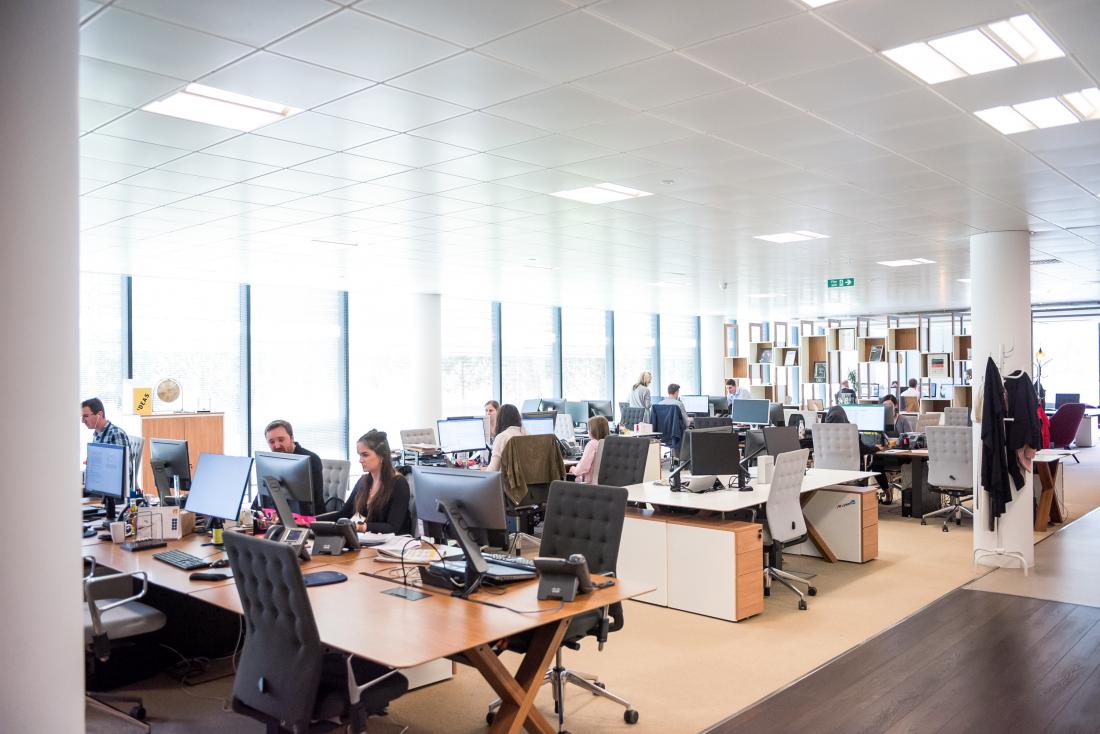
How do humans negatively affect office air quality?
There is a lot of concern about the negative effects of air pollution on health.
Exposure to polluted air can contribute to the development of cancer, lung disease, and even heart disease.
Generally speaking, however, when we think of air pollution, we think primarily of the air we breathe when out on the streets of metropolitan areas.
Yet in the United States and elsewhere in the world, people often spend as many as 40 hours per week at work, and many individuals likely spend much — if not most — of that time in an office environment.
Thus, the quality of office air can be just as instrumental in predicting whether or not individuals continue to experience good health. How can we tell if office air quality is adequate, and what are the greatest pollutants of office air?
These are the questions that researchers from Purdue University in West Lafayette, IN, addressed in a recent study. The investigators will expand on their findings at the 2019 American Association for Aerosol Research Conference that will take place in Portland, OR, on October 14–18, 2019.
“If we want to provide better air quality for office workers to improve their productivity, it is important to first understand what’s in the air and what factors influence the emissions and removal of pollutants.
Study co-author Brandon Boor
Humans are ‘dominant source’ of pollutants
“The chemistry of indoor air is dynamic. It changes throughout the day based on outdoor conditions, how the ventilation system operates, and occupancy patterns in the office,” Boor explains.
To find out exactly what affects office air quality and how humans may contribute to indoor air pollution, Boor and colleagues set up a complex sensor system in the shared office spaces at the Living Labs at Purdue University’s Ray W. Herrick Laboratories.
The researchers even added temperature sensors to desk chairs to find out exactly when they were occupied and how human presence may affect air quality in an indoor environment. They also used a highly specialized device called a proton transfer reaction time-of-flight mass spectrometer.
Boor explains that the device acts like a “highly sophisticated nose” that is able to establish the presence of tiny particles, or volatile compounds, that can be unhealthful in ambient air.
“Our preliminary results suggest that people are the dominant source of volatile organic compounds in a modern office environment,” he notes.
“We found levels of many compounds to be 10 to 20 times higher indoors than outdoors. If an office space is not properly ventilated, these volatile compounds may adversely affect worker health and productivity,” adds Boor.
One of the top volatile compounds that reduces air quality is isoprene, a flammable substance present in essential oils. The researchers identified isoprene in the breath of people working in the office.
Another pollutant, called ozone, comes from the outside. However, the researchers explain that once it enters the office environment, it may become even more harmful — in part because of simple human acts, such as peeling an orange.
Ozone, the researchers say, interacts with monoterpenes. These are a class of compounds present in abundance in the peel of oranges and other citrus fruits.
Through this interaction, ozone mixes with the monoterpenes, forming different particles so small that they can penetrate and get stuck deep within lung tissue. This could render them a threat to health.
The researchers also add that volatile chemicals present in deodorant, makeup, and hair care products could equally affect office air quality and the quality of air outside the office. This is because ventilation systems extract them and eject them outside.
“We wanted to shed light on the behind-the-scenes role ventilation systems have on the air we breathe,” says Boor. The investigators hope that their recent research may lead to better strategies to address pollution at both a macro and a micro level.
